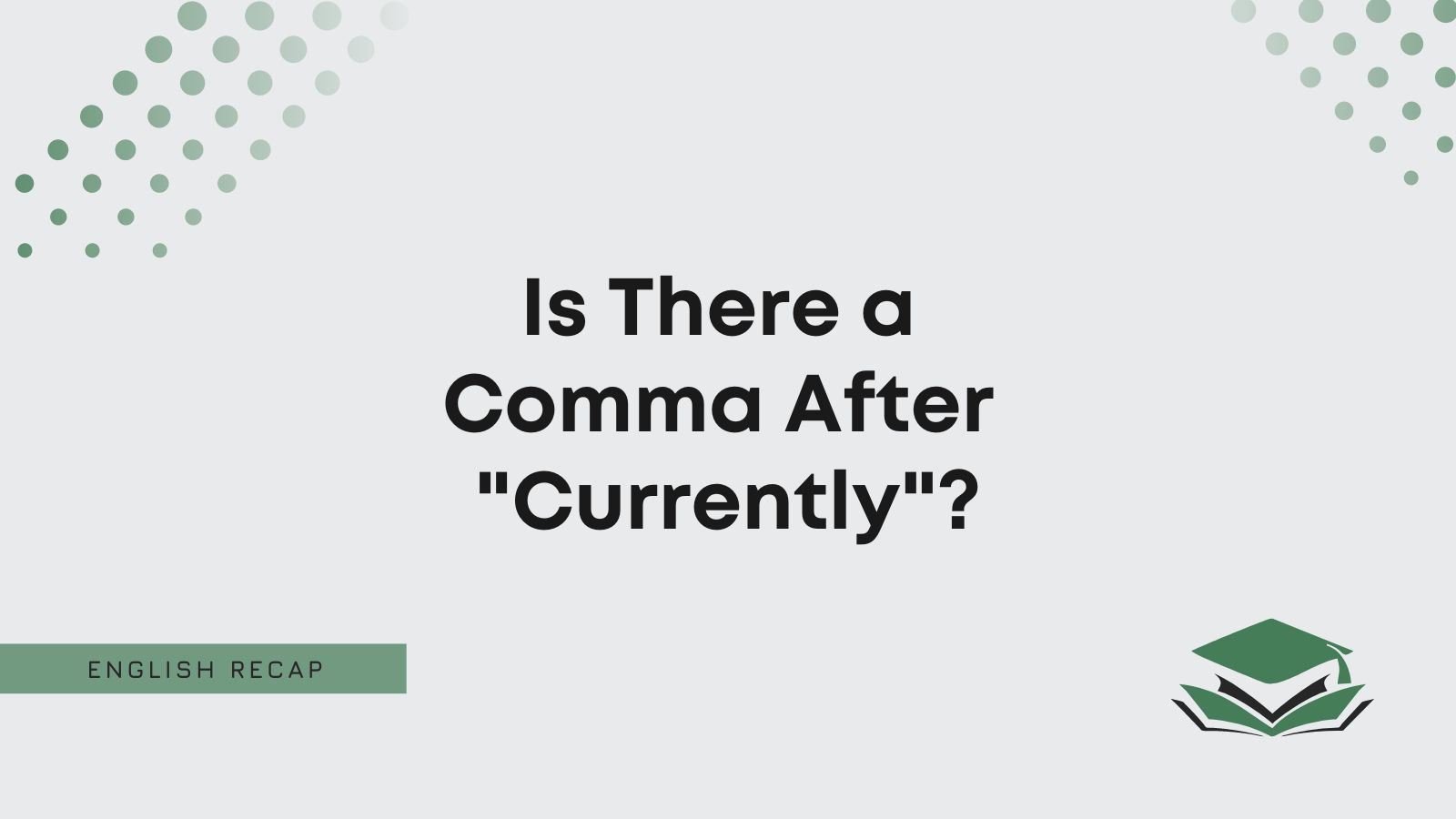Rule 1: When “currently” is the first word in a sentence, you need a comma after it because it is an introductory clause.
- Correct: Currently, we are doing well in terms of sales.
- Incorrect: Currently I am living with my parents.
Rule 2: If the word “currently” comes at the end of an independent clause, you should use a comma.
- Correct: I am living with my parents currently, but I am buying my own place next month.
- Incorrect: She is working in Los Angeles currently so she has been enjoying the hot weather.
Rule 3: When “currently” appears before a verb or between verbs, you should not use a comma.
- Correct: There is food currently on sale in the lobby.
- Incorrect: He is currently, studying a course on music theory.
Rule 4: You should avoid commas when “currently” is between a noun and an adjective.
- Correct: There are sandwiches currently available in the dining room.
- Incorrect: There are positions currently, available in the finance department.
In the rest of the article, you can learn more about the different rules regarding the word “currently” and more examples of when you should and shouldn’t use a comma.
When to Use a Comma After “Currently”
In this section, we’ll explain when to use a comma after “currently.” Rules 1 and 2 explain this.
Rule 1: Use a comma after “currently” when it is the first word in a sentence.
This is also known as an “introductory clause.”
The rule has no exceptions because a comma always follows introductory clauses.
Using the word “currently” at the start of a sentence is the same as starting with “At the moment” or “At present.”
- Currently, Mary is studying French.
- Currently, we are not open for business due to the flood damage.
Rule 2: Use a comma after “currently” when it is the final word in an “independent clause.”
Independent clauses are connected by the words “for/and/nor/but/or/yet/so” when connected to another independent clause.
- She is working for me currently, but I think she is looking for a new job.
- She is studying for a Ph.D. currently, and she hopes to move here when she finishes.
Similarly, use a comma when “currently” appears at the end of an independent clause with a dependent clause after it.
Dependent clauses link to independent clauses with words like “although/however/therefore.”
- He is working in Dubai currently, although he is moving to Spain soon.
- We are looking for a new house currently, however, we haven’t found one yet.
When to Avoid a Comma After “Currently”
You should avoid a comma after “currently,” when Rules 3 and 4 apply.
Rule 3: You shouldn’t use a comma after “currently” when it appears between or before verbs.
The word “currently” can be placed in many positions in the sentence. If “currently” appears between the verb “to be” and the main verb, you should not use a comma.
- He is currently training to become a firefighter.
- We are currently planning a new strategy to improve public relations.
Rule 4: You should not use a comma when “currently” appears between nouns and adjectives, or before a preposition.
- There are vacancies currently available.
- The documents are currently in the post.
Conclusion
You should use a comma after “currently” when it appears at the end of an independent clause and when it is the first word of a sentence. Do not use a comma when “currently” appears before or between verbs and when “currently” appears between nouns and adjectives.

